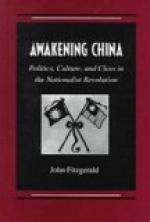No doubt engineering may succeed in removing some of the obstacles and in minifying the dangers of this passage. Steam, too, may supply another mode of traction to take the place of these teams of men. A still revolution is in prospect, namely a ship canal or railway. The latter, perhaps, might be made to lift the junks bodily out of the water and transport them beyond the rapids. Two cities, however, would suffer somewhat by this change in the mode of navigation, namely, Ichang at the foot and Chungking at the head of the rapids. The latter is the chief river port of Szechuen, a province having four times the average area.
The great province of Szechuen, if it only had the advantages of a seacoast, would take the lead in importance. As it is, it is deemed sufficiently important, like Chihli, to have a viceroy of its own. The name signifies the “four rivers,” and the province has as many ranges of mountains. One of them, the Omeshan, is celebrated for its beauty and majesty. The mountains give the province a great variety of climate, and the rivers supply means of transportation and irrigation. Its people, too, are more uniform in language and character than those of most other regions. Their language partakes of the Northern mandarin. Near the end of the Ming dynasty the whole population is said to have been destroyed in the fratricidal wars of that sanguinary period. The population accordingly is comparatively sparse, and the cities are said to present a new and prosperous aspect. Above Szechuen [Page 52] lie the two provinces of Kweichau and Yuennan, forming one viceroyalty under the name of Yuenkwei.
Kweichau has the reputation of being the poorest province in China, with a very sparse population, nearly one-half of whom are aborigines, called shans, lolos, and miaotzes.
Yuennan (signifying not “cloudy south,” but “south of the cloudy mountains”) is next in area to Szechuen. Its resources are as yet undeveloped, and it certainly has a great future. Its climate, if it may be said to have one, is reputed to be unhealthful, and among its hills are many deep gorges which the Chinese say are full of chang chi, “poisonous gases” which are fatal to men and animals—like the Grotto del Cane in Italy. But these gorges and cliffs abound in better things also. They are rich in unexploited coal measures and they contain also many mines of the purest copper ore. The river that washes its borders here bears the name of Kinsha, the river of “golden sands.” Some of its rivers have the curious peculiarity of flowing the reverse way, that is, to the west and south instead of toward the eastern sea. The Chinese accordingly call the province “Tiensheng” the country of the “converse streams.”
Within the borders of Yuennan there are said to be more than a hundred tribes of aborigines all more or less akin to those of Kweichau and Burma, but each under its own separate chief. Some of them are fine-looking, vigorous people; but the Chinese describe them as living in a state of utter savagery. Missionaries, however, have recently begun work for them; and we may hope that, as for the Karens of [Page 53] Burma, a better day will soon dawn on the Yuennan aborigines.




